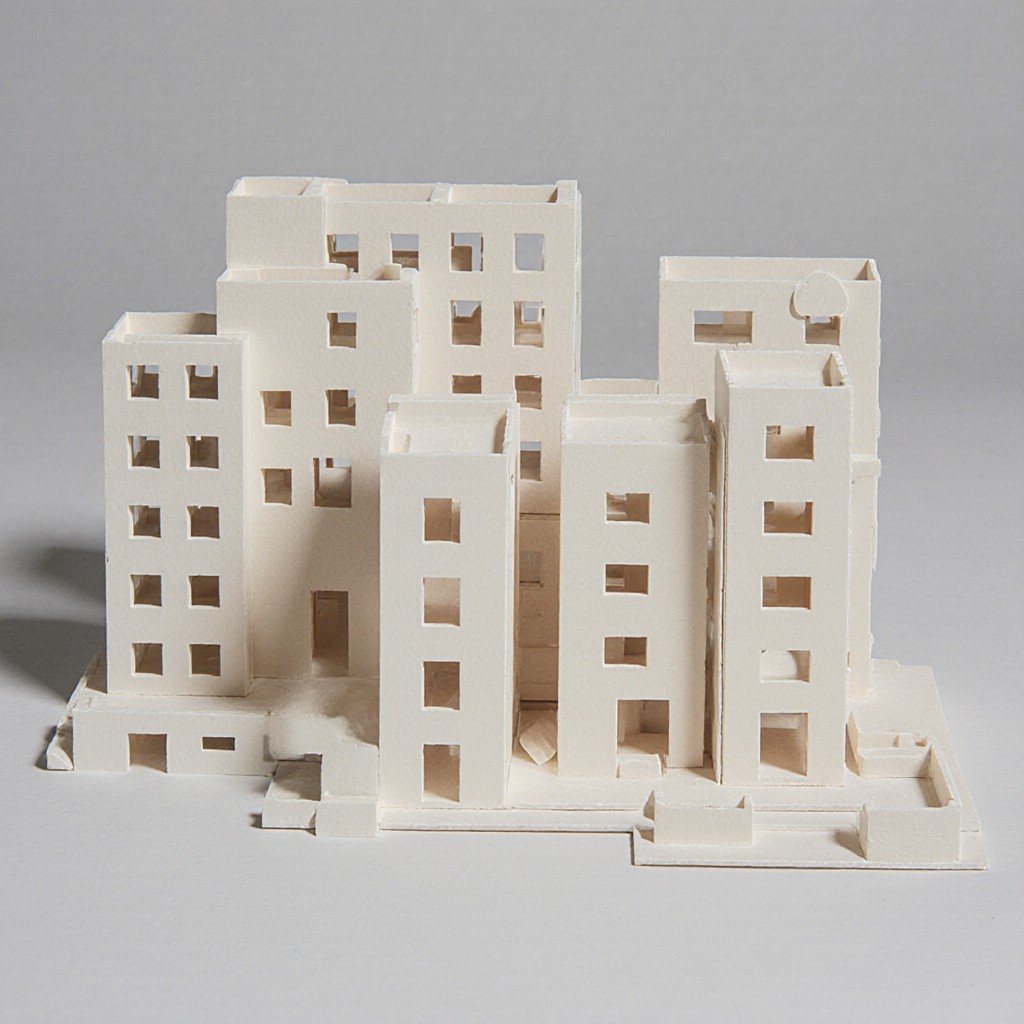Millie: Hi, Luke. So, we're here to talk over our first assignment on alternative building materials.
Luke: Yeah, I think it will be really interesting to learn more about how plastic has been used. I found lots of information from the 1960s.
Millie: So, did you find out why the idea of plastic buildings wasn't popular with the public at that time? It wasn't the materials' environmental credentials.
Luke: The concept of plastic houses was just too futuristic.
Millie: So you mean it was their appearance?
Luke: No. 1People liked their modern design, but the idea of that sort of building as a home just didn't appeal.
Millie: Right. I did some research on the kind of problems engineers had with the old plastics in the 1960s and 1970s.
Luke: What did you learn?
Millie: 2Well, firstly, because plastic doesn't weigh very much, the buildings weren't very good in windy weather. They managed to fix that by amending the shape of the buildings, but the real disadvantage was that when the plastic was exposed to the light, it developed fine cracks, and when rain got into these cracks, the plastic would deform and lose its strength.
Luke: Right. I wonder where we can find some more information about the situation nowadays. Maybe we could ask one of the PhD students.
Millie: I expect they'll be too busy.
Luke: Yeah, that's true. Well, we could always use the internet.
Millie: 3Maybe we should research more academic sources like the journals we have in the library.
Luke: Okay. That way we can reference everything properly at the end of the assignment. Have you read Peterson's article about plastic houses?
Millie: Yeah, it was really good. But it didn't have enough illustrations of the houses. That was a shame. They'd have been useful for us as examples in our presentation. I liked the way it was organised though. That was really clear.
Luke: 4Yeah, and it wasn't too technical.
Millie: But you did need to know a bit about plastic houses before you read it to get the most out of it.
Luke: That's true. Okay, well shall we start comparing our findings then?
Millie: Sure, I'll make some notes. 5Well, the earliest one I read about was a plastic house called the House of the Future that was built in 1957, though no one actually lived in it. It was on show at a theme park in America for 10 years. After that, they demolished it, but they had a hard time. It was really built to last. They couldn't break the plastic up.
Luke: Was that the one that had an ultrasonic dish washing machine?
Millie: Yes. That would still be pretty revolutionary today.
Luke: Did you read about the Wonder House? It was designed in 1964 by an industrial designer called Alfred Noyes.
Millie: Oh, the one with the roof like a sort of tent or an umbrella.
Luke: That's right. The roof was made of fiberglass and it curved down to the ground at each corner, enclosing a big central space. Then the sides were filled with glass or plastic. 6It was a really innovative idea for the time, but Noyes only made a small model and the design wasn't implemented.
Millie: Hmm, pity. What about those spaceship houses they built between 1968 and 1978?
Luke: 7Like flying saucers. They built over a hundred of them. I don't know if I'd want to live in one. The living area was quite limited, and they had really low ceilings.
Millie: But they do look really futuristic, don't they? With their white walls and circular shape, yes. But the plastic houses I like are the foam houses they built between 1979 and 1983. 8They've got really curvy shapes. They built them by spraying foam over a great big balloon. They were partly built to show what computers could do in the home, things like controlling heat and light and so on. Quite new ideas at the time.
Luke: And they were very well insulated as well, so they saved energy. People were just beginning to get into that.
Millie: 9I read about a plastic exhibition hall that can all be packed away in a relatively small container. You just put it on a truck and take it to wherever you want it, then inflate it. You know, fill it up with air and there's room for hundreds of people. And when the exhibition or whatever's over, you just take it down again and you can reuse it again and again.
Luke: 10And there's a house in New Zealand that's built from household and industrial waste, like plastic boxes. They say it's a much better construction material than bricks from the point of view of insulation
Millie: Yes, they're using that idea to build houses in other parts of the world too. OK, well it looks as if we've got plenty of...

![[Forecast Q2-2025] - Biology lecture](https://static.helik.app/reading/8fd3d7d2-ccf9-47a3-8920-2e7a3b0d6607)
![[Forecast Q2-2025] - Living in the City](https://static.helik.app/reading/1a60bcf3-f3a7-4e9b-97a2-94d156a0de3b)
![[Forecast Q2-2025] - Student Union](https://static.helik.app/reading/fb443123-8c1d-447e-8c79-5a01650f4754)
![[Forecast Q2-2025] - Fruit-picking Job in an Orchard](https://static.helik.app/reading/e1968346-6c55-44ae-b8d3-f6a4fb7207b9)
![[Forecast Q2-2025] - University Crime Prevention](https://static.helik.app/reading/bdda593e-16d6-4c72-8a12-b116e917b27c)
![[Forecast Q2-2025] - Business Course](https://static.helik.app/reading/3308e282-99a6-4bcb-9d22-0b488701d968)
![[C20T1] - Choosing a restaurant](https://static.helik.app/reading/e9b21123-c43c-42fb-88b7-5d0be3a37e03)
